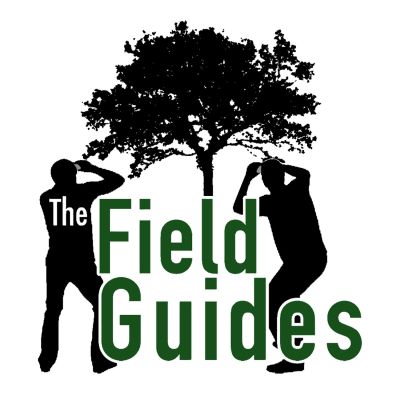Nature nerds rejoice! The Field Guides is a monthly podcast that will bring you out on the trail, focusing on the science of our North American wildlife.
http://www.thefieldguidespodcast.com/new-blog/
Ep. 54 - Can't Touch This: A Deep Dive Into Touch-me-not
Jewelweed. Spotted touch-me-not. Orange Balsam. It’s a plant known by many names, and, even if you don’t recognize any of them, you’ve probably popped one of its exploding seed pods. A favorite of hummingbirds and nature-lovers young and old, it’s a species with many stories to share. Listen in as the guys dive deep into the jewelweed patch, eating some seeds, trying to find the source of the “jewel” in jewelweed’s name, and getting to the bottom of the age-old claim that jewelweed is a cure for poison ivy.
This episode was recorded on September 26, 2021 at Birdsong Park in Orchard Park, NY
Episode Notes:
Which species is more common in North America: yellow (aka pale) jewelweed or orange jewelweed? While it may vary from place to place, orange jewelweed seems to be the more common species. Nearly every site we visited referred to it as “common” or “more common” and to the yellow jewelweed as “less common”. Orange jewelweed’s North American range is also broader than yellow jewelweed’s (yellow is absent from most of the Gulf states and most Canadian provinces).
When do the Witch hazel seeds explode out of their capsules? Steve and Bill were both confused on the timing. Witch hazel (Hamamelis virginiana) is a forest understory tree that blooms in the fall. The seeds take a year to develop and are forcibly expelled (because of dehiscence) from the seed capsules the following fall or winter. Check out our episode on witch hazel!
Are there any plants that produce only cleistogamous (closed, self-pollinating) flowers? Not that we could find. Most sources make reference to the fact that cleistogamous flowering is a behavior that appears to have evolved to ensure reproduction under unfavorable conditions. These conditions usually limit or prevent cross pollination of the typical, chasmogamous (open) flowers.
How many species of jewelweed do we have in North America? The Lady Bird Johnson Wildflower Center lists 4 species of Impatiens native to North America. I. capensis and I. pallida are the ones found in the east (although, as mentioned in this episode, some sources list I. capensis as native in the Pacific northwest, as well). Five nonnative Impatiens species have also been introduced to the continent.
Steve wondered what the Latin term ecalcarata means. This came up when Bill was discussing the western species of jewelweed, specifically, Impatiens ecalcarata. Turns out that ecalcarata means spurless, and the common name of this species is, appropriately enough, spurless touch-me-not or spurless jewelweed (AKA western jewelweed). FYI: The Latin name has been updated recently, and this species is now Impatiens ecornuta.
Schizomyla impatientis is the Latin name of the midge that makes a gall on jewelweed. Steve recognized the genus, Schizomyla, and wondered if this insect was related to any of the gall-making insects we mentioned way back in our goldenrod episode (episode 1!). Bill checked, and the answer is no.
Books Mentioned During This Episode
100 Flowers and How They Got Their Names – Diana Wells
How Plants Get Their Names by LH Bailey
The Book of Swamp & Bog: Trees, Shrubs, and Wildflowers of Eastern Freshwater Wetlands by John Eastman
National Audubon Society Birds of North America
National Audubon Society: Trees of North America
Useful Links
Gumleaf Boots, USA (free shipping for patrons)
Thank you to Always Wandering Art (Website and Etsy Shop) for providing the artwork for many of our previous episodes!
Support us on Patreon!
Check out the Field Guides merch at our Teespring store. It’s really a great deal: you get to pay us to turn your body into a billboard for the podcast!
Works Cited
Cipollini, K. A. & Hurley, S. L. (2008) Variation in Resistance of Experienced and Naive Seedlings of Jewelweed (Impatiens capensis) to Invasive Garlic Mustard (Alliaria petiolata). The Ohio journal of science. 108 (3), 47–49.
Guin, Jere D., and Ruth Reynolds. "Jewelweed treatment of poison ivy dermatitis." Contact dermatitis 6.4 (1980): 287-288.
Lipton, R. A. "The use of impatiens biflora (jewelweed) in the treatment of rhus dermatitis." Annals of allergy 16.5 (1958): 526.
Long, David, Noel H. Ballentine, and James G. Marks Jr. "Treatment of poison ivy/oak allergic contact dermatitis with an extract of jewelweed." Dermatitis 8.3 (1997): 150-153.
Martin, L.J., Agrawal, A.A. and Kraft, C.E., 2015. Historically browsed jewelweed populations exhibit greater tolerance to deer herbivory than historically protected populations. Journal of Ecology, 103(1), pp.243-249.
Motz, Vicki A., et al. "Efficacy of the saponin component of Impatiens capensis Meerb. in preventing urushiol-induced contact dermatitis." Journal of ethnopharmacology 162 (2015): 163-167.
Motz, Vicki Abrams, et al. "The effectiveness of jewelweed, Impatiens capensis, the related cultivar I. balsamina and the component, lawsone in preventing post poison ivy exposure contact dermatitis." Journal of ethnopharmacology 143.1 (2012): 314-318.
Schmitt, J., Ehrhardt, D. and Swartz, D., 1985. Differential dispersal of self-fertilized and outcrossed progeny in jewelweed (Impatiens capensis). The American naturalist, 126(4), pp.570-575.
Travers, S.E., Temeles, E.J. and Pan, I., 2003. The relationship between nectar spur curvature in jewelweed (Impatiens capensis) and pollen removal by hummingbird pollinators. Canadian journal of botany, 81(2), pp.164-170.
